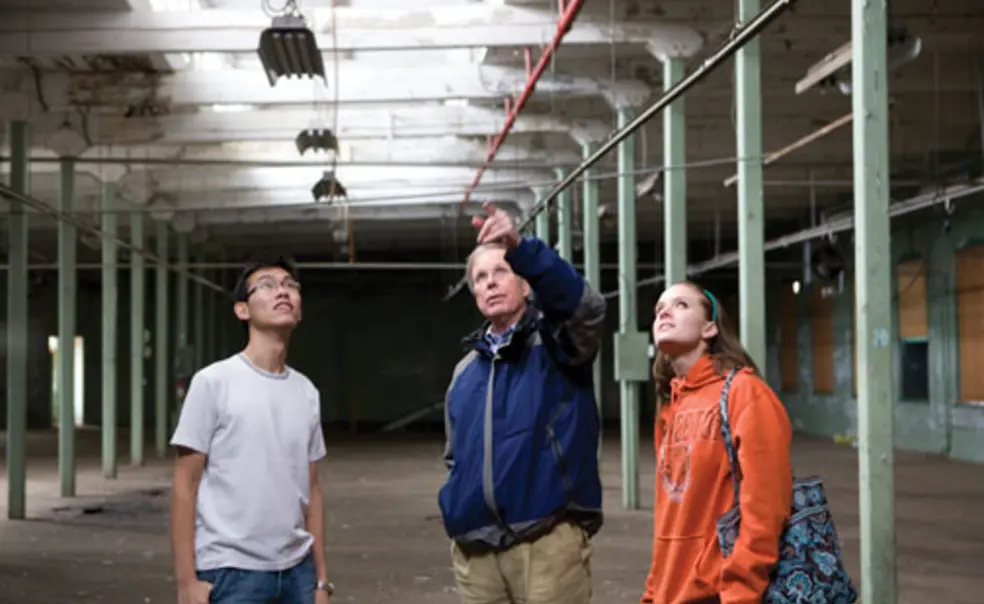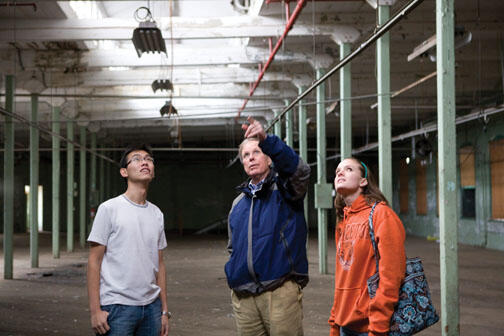Real-world experience can be hard to come by as an undergraduate, but a dozen Princeton students, including nine seniors, spent the past semester doing hands-on research and design to assist with an environmentally friendly renovation of an abandoned factory in Hamilton, N.J. When the building is finished in 2010, it will serve as the headquarters for Isles Inc., a nonprofit community development and environmental organization founded by Martin Johnson ’81.
The course, “Environmental and Civil Engineering Systems Planning and Design,” was offered by the Department of Chemical and Environmental Engineering, which has been trying to integrate concepts of sustainability throughout its course offerings, said Michael Celia, the department chairman. The difficulty in providing students with practical applications was finding a project in the area that needed work that could be done within the timeline of the academic calendar.
Enter Johnson, the president of Isles, which was looking to consolidate its offices, currently spread across five locations in and around Trenton, in a newly redesigned building. Isles hired Randy Croxton, the principal of Croxton Collaborative Architects, to remodel the 19th-century factory. Croxton met several times with the students.
The course was taught by Robert Harris, a visiting lecturer in the department and co-founder of an environmental consulting firm, Environ International. Harris divided the students into groups and assigned them to investigate different aspects of the building redesign. One group used a Web-based software program called Green Building Studio to create models assessing the effects of different design elements on energy efficiency. By changing the types of windows, for example, or their size or placement, students could determine which yielded the greatest savings. Another group looked at ways to reduce the use of fossil fuels and to render the building’s energy use carbon-neutral. A third group looked at ventilation, a feature Harris said often is ignored in designing green buildings but which can have a significant effect on employee productivity. A fourth group studied ways to reduce water demand, designing a 12,000-gallon tank for the roof and creating a computer model that assessed water treatment options.
“It’s been a good chance to do real building design,” said Eric Hui ’09, who noted that the course also taught him how to make presentations to an actual client. Harris added that the course placed a heavy emphasis on writing, an important aspect of professional development for aspiring engineers.












No responses yet